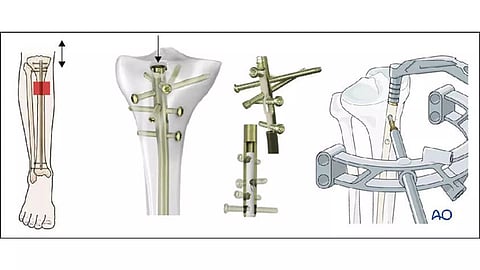

CHENNAI: The Madras Institute of Orthopaedics and Traumatology (MIOT) launched the tibia nail advanced system for the first time in India on Thursday in Chennai.
The tibia nail advanced system, designed by AO-Synthes, Switzerland, incorporates Angle-Stable technology which provides enhanced stability and promotes faster healing in patients with tibial fractures, said the press statement released by the MIOT. The Department of Orthopaedics at MIOT developed the new nailing method to provide patients undergoing treatment for fractures near the knee joint, added the statement. Nailing is a surgical procedure that involves inserting a metal rod or nail through the top of the fractured bone.
While the traditional surgery on the tibia, the largest bone in the lower leg, has several drawbacks, the hospital claims the nailing method, a keyhole procedure involving a small incision made at the top of the knee joint, through which a specially designed nail is inserted into the bone, is more effective.
According to the hospital, the special angle-stable technology used in the system provides strong stability, reducing the chance of bone rotation or displacement.
This stability promotes better alignment of the fractured bones and aids in the healing process, said the statement. By going directly through the top of the bone into the centre of the virgin area above the kneecap, the nailing method avoids opening heavily injured or damaged wounds. This minimises disruption to important tissues, muscles, nerves, and blood vessels, reducing the likelihood of complications, noted the statement. This technique not only minimises the damage of soft tissues but also allows the patient to bend their knees post-surgery, which is not possible with traditional casting methods, the statement added.